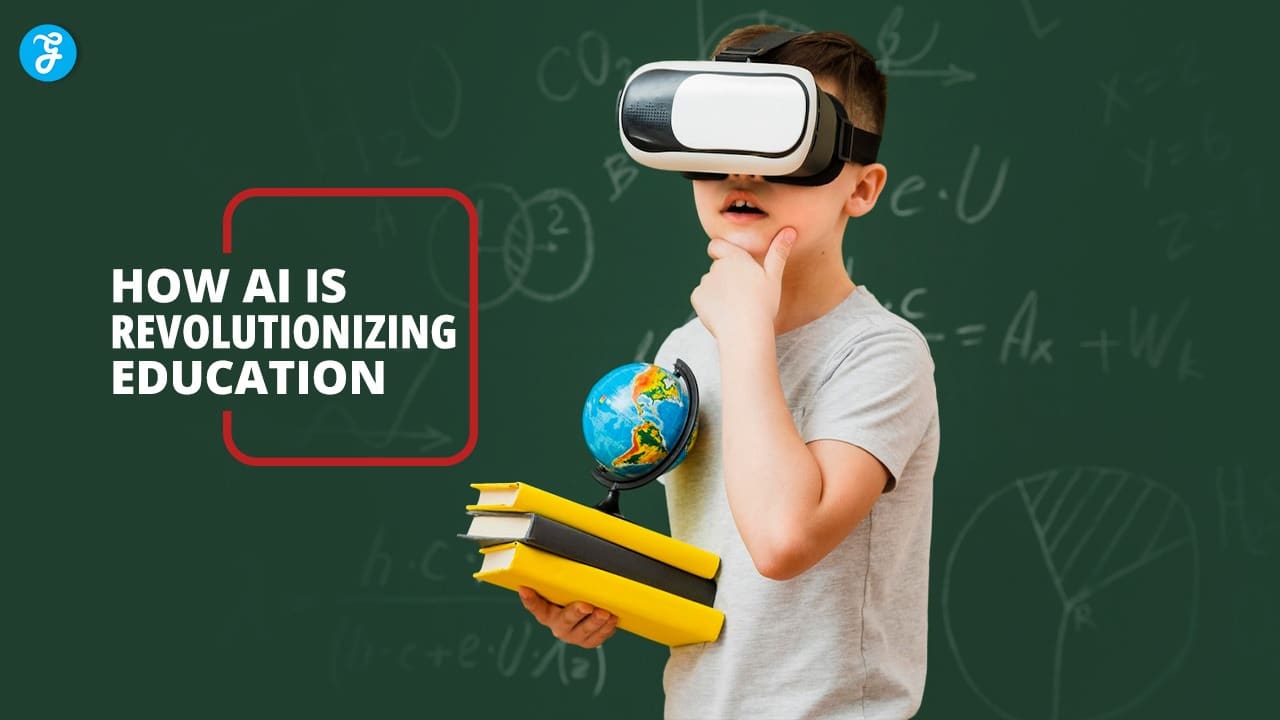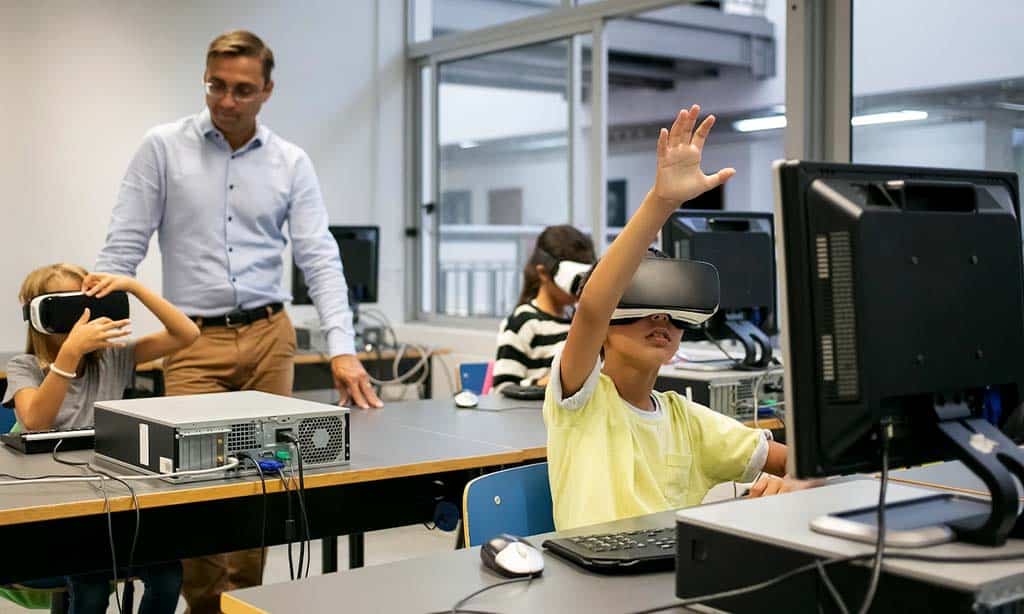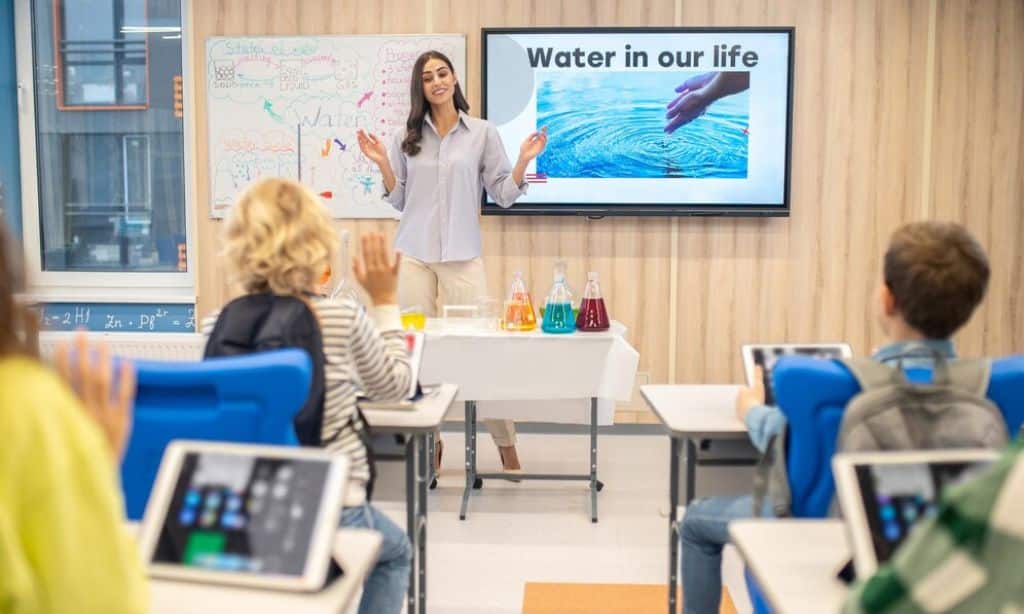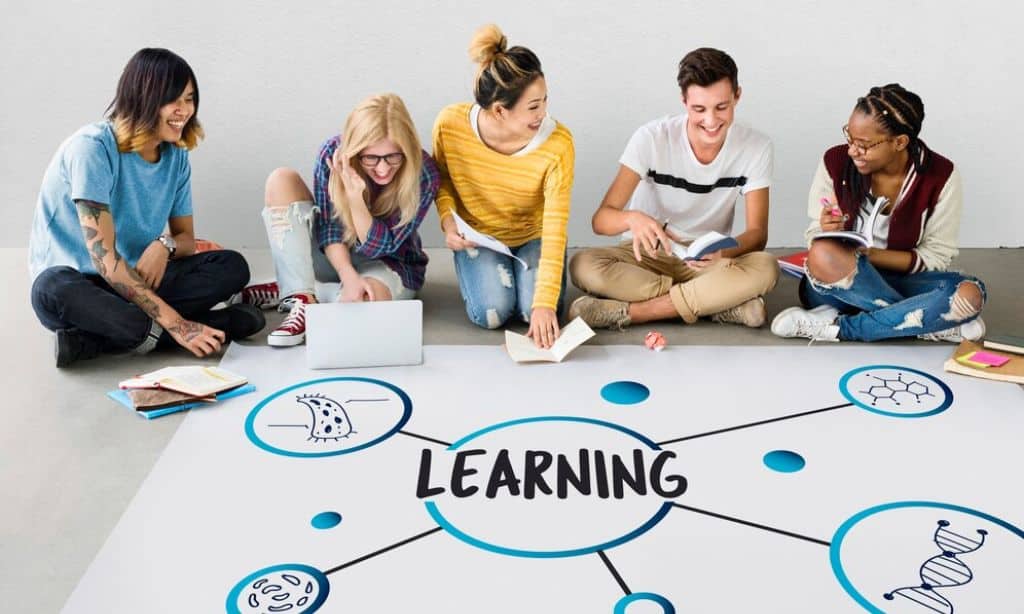Artificial Intelligence (AI) is changing how we learn and teach. It’s making education more exciting and helpful for students and teachers. You might wonder how AI can do this.
AI tools are creating new ways to study, practice skills, and get feedback that fits each student’s needs.
Schools and colleges are starting to use AI in classrooms and online courses. This new technology helps make learning more fun and easier to understand.
It also helps teachers do their jobs better. AI is opening up many new possibilities in education that weren’t possible before.
1. Personalized Learning Paths
AI is changing how students learn by creating custom paths for each person. These paths match a student’s skills, interests, and ways of learning.
AI looks at how you do in class and figures out what you need. It can spot where you’re struggling and give extra help. It can also find areas where you’re doing well and give you harder tasks.
You get lessons that fit your pace. If you learn quickly, AI moves you ahead faster. If you need more time, it slows down. This way, you’re always learning at the right speed for you.
AI also picks topics you like. It looks at what subjects excite you and gives more of those. This makes learning more fun and keeps you interested.
As you learn, AI changes your path. It sees how you’re doing and adjusts your lessons. This means your learning always fits your needs, even as they change.
With AI, you can learn anytime and anywhere. It gives you tasks you can do on your own schedule. This makes it easier to fit learning into your life.
2. Adaptive Assessments
AI is changing how tests work in schools. These new tests adjust to each student’s level as they answer questions.
You might start with easier questions. If you get them right, the test gives you harder ones. If you struggle, it gives you easier ones.
This helps teachers know exactly what you understand. It also shows where you need more help. You don’t waste time on stuff that’s too easy or too hard for you.
Adaptive tests can be less stressful. You’re always working at the right level for you. This can make you feel more confident about taking tests.
These tests give quick results. You and your teachers can see right away how you did. This lets teachers adjust their lessons to fit what you need.
AI can spot patterns in how you answer. It might notice if you’re having trouble with certain types of math problems. Then your teacher can give you extra practice on those.
Adaptive tests can make learning more fun. They feel more like a game that changes as you play. This can make you want to try harder and do your best.
3. AI-Powered Tutoring Systems
AI tutoring systems are changing how you learn. These smart programs use artificial intelligence to give you personalized help.
They can figure out what you know and don’t know. Then they adjust lessons just for you. It’s like having a private tutor available anytime.
These systems watch how you work. They can tell if you’re confused by looking at your face or how you move. When you need help, they give hints right away.
You get instant feedback on your work. The AI tutor checks your answers and tells you what you did right or wrong. This helps you learn faster.
These tutors can teach many subjects. Math, science, languages – AI tutors can help with all of these. They use games and interactive exercises to make learning fun.
AI tutors never get tired or impatient. You can practice as much as you want. They’re always ready to explain things again if you don’t understand.
These systems keep getting smarter. They learn from all the students they help. This means they get better at teaching over time.
AI tutoring makes learning more accessible. You can use these systems at home or anywhere with internet. This gives more people a chance to learn.
4. Automated Administrative Tasks
AI is making a big impact on school paperwork. It helps with many boring jobs that used to take up lots of time.
Grading papers is now much faster with AI. Teachers can focus more on helping students instead of spending hours marking assignments. AI can check multiple choice tests and even grade essays.
Keeping track of attendance is easier too. AI systems can use cameras or ID cards to see who’s in class. This saves time and is more accurate than manual records.
AI also helps schedule classes and events. It can find the best times that work for everyone. This makes planning much simpler for schools.
Student records are better organized with AI. It can quickly pull up grades, attendance, and other info when needed. This helps teachers and staff make better decisions.
AI chatbots can answer common questions from students and parents. This frees up staff to deal with more complex issues. The chatbots can help with things like course selection or finding school resources.
Budgeting and finance tasks are smoother with AI. It can track spending, predict future costs, and find ways to save money. This helps schools use their funds more wisely.
By taking care of these tasks, AI gives educators more time to teach and support students. It makes schools run more efficiently and can improve the learning experience for everyone.
5. Intelligent Content Creation
AI is changing how educational content is made. You can now get custom learning materials that fit your needs. AI tools can create different types of content like articles, videos, and quizzes.
These AI systems look at lots of information to make new content. They can make study guides, practice tests, and lesson plans. This saves teachers time so they can focus on teaching.
AI can also update content quickly. It can add new facts and remove old info. This keeps learning materials current and accurate.
You can get content that matches how you learn best. AI figures out if you like reading, watching videos, or doing hands-on activities. Then it gives you materials in that style.
AI content creation tools can make learning more fun too. They add games and interactive elements to keep you interested. This helps you stay motivated and remember what you learn.
6. Data-Driven Insights
AI is changing how schools use data. It helps teachers and schools make better choices about learning.
You can now see patterns in student performance. AI looks at test scores, attendance, and homework completion. This shows where students need help.
Schools use AI to predict which students might struggle. They can step in early to offer support. This helps prevent students from falling behind.
AI also shows which teaching methods work best. You can see which lessons lead to better test scores. This helps teachers improve their teaching.
Personalized learning becomes easier with AI. It tracks each student’s progress and suggests tailored activities. You get a custom learning plan based on your needs.
AI helps schools manage resources better. It can predict class sizes and staffing needs. This makes planning for the future easier.
With AI, you get real-time feedback on your work. It can grade essays and math problems quickly. This lets you know how you’re doing right away.
AI tools help spot trends across whole school districts. You can compare different schools and programs. This helps leaders make smart decisions about education policies.
7. Smart Classrooms
Smart classrooms are transforming how you learn. These high-tech spaces use AI to create better learning experiences. You’ll find interactive displays, virtual reality tools, and smart devices working together.
AI helps personalize lessons for you. It tracks your progress and adjusts content to fit your needs. This means you get lessons that match your learning style and pace.
In smart classrooms, you can access information instantly. AI-powered search tools help you find answers quickly. This saves time and lets you focus on understanding concepts.
Group work becomes easier too. Smart boards let you share ideas and work on projects together. AI can even help form study groups based on your skills and goals.
These classrooms also make grading faster. AI can check multiple-choice tests right away. This gives you quick feedback on how you’re doing.
Smart classrooms prepare you for the future. You learn to use new technologies that you’ll see in jobs later. This gives you an edge in the modern world.
Teachers benefit too. AI handles routine tasks, giving them more time to help you one-on-one. They can focus on teaching complex ideas and guiding your learning.
8. AI-Based Language Translation
AI is changing how you learn languages. It’s making translation faster and more accurate than ever before.
You can now use AI tools to instantly translate text, speech, and even images. This helps you understand content in other languages without waiting.
In the classroom, AI translation lets students from different countries work together easily. You can communicate with classmates who speak other languages.
Teachers can use AI to create materials in multiple languages quickly. This saves time and helps reach more students.
AI translation is getting better at understanding context and nuance. You get translations that sound more natural and capture the true meaning.
For language learners, AI provides immediate feedback on pronunciation and grammar. You can practice speaking and writing with an AI tutor anytime.
As AI translation improves, it’s opening up global opportunities. You can access courses from around the world in your own language.
9. Virtual Reality Classrooms
Virtual reality (VR) is changing how you learn in exciting ways. Imagine putting on a headset and suddenly being transported to ancient Rome or the surface of Mars. That’s what VR classrooms can do.
You can explore 3D models of complex molecules or historical landmarks up close. It’s like being there in person. VR lets you practice dangerous skills safely, like performing surgery or operating heavy machinery.
Teachers can create customized virtual environments to match lesson plans. You might take a virtual field trip to the pyramids of Egypt one day and the Great Barrier Reef the next.
VR also allows for remote collaboration. You can work on group projects with classmates from around the world as if you’re in the same room. This breaks down geographic barriers to learning.
The immersive nature of VR helps you focus and retain information better. When you’re fully engaged in a virtual world, there are fewer distractions than in a traditional classroom.
As VR technology improves, these virtual classrooms will become more realistic and interactive. Soon, the line between physical and virtual learning spaces may start to blur.
10. Real-Time Feedback
AI is changing how students get feedback on their work. You no longer have to wait days or weeks to find out how you did. AI tools can check your answers right away and tell you what you got right or wrong.
This quick feedback helps you learn faster. You can fix mistakes quickly and try again. It’s like having a tutor always ready to help you improve.
AI can also give you tips on how to do better next time. It looks at what you struggle with and gives advice just for you. This personal guidance can really boost your learning.
For teachers, AI feedback tools save time on grading. They can focus more on helping students one-on-one. AI handles the basic checking, while teachers give deeper insights.
Real-time feedback from AI works for all kinds of subjects. It can check math problems, grammar in essays, or even your pronunciation in language classes. You get to practice more and learn from your mistakes right away.
11. Plagiarism Detection Tools
AI is changing how schools catch cheating. New tools can quickly spot when students copy work. These programs compare student writing to huge databases of text.
You can now use AI to check papers for copied content. It’s much faster than teachers reading everything by hand. Some tools even find text that’s been slightly changed.
AI detectors look at writing style too. They can tell if a paper sounds different from how a student usually writes. This helps catch work done by AI writing programs.
These tools give teachers more time to help students learn. Instead of hunting for cheating, they can focus on teaching. Students also learn to value original work more.
AI plagiarism checks are getting smarter all the time. They can now spot tricky forms of copying that used to slip through. This makes academic honesty easier to maintain.
Using these tools teaches students about proper citation. It helps them understand when and how to give credit for ideas. This is an important skill for higher education and careers.
12. Learning Management Systems (LMS)
Learning Management Systems are changing how you learn. These digital tools make education more flexible and accessible. You can now access learning materials anytime, anywhere.
AI is making LMS even smarter. It can tailor lessons to fit your needs. This means you get a personalized learning experience.
LMS platforms offer many features. You can find quizzes, discussion forums, and virtual classrooms. These tools help you engage with the material in different ways.
AI-powered LMS can grade your work automatically. This gives you quick feedback on your progress. You don’t have to wait for a teacher to mark your assignments.
These systems also help teachers. They can track student progress easily. This lets them identify who needs extra help.
LMS platforms are useful for both schools and businesses. You can use them for formal education or job training. They make it easy to keep learning throughout your life.
As technology improves, LMS will keep getting better. Virtual reality might become part of these systems. This could make your learning experience even more immersive.
13. Digital Course Materials
AI is changing how you get your learning materials. Instead of heavy textbooks, you can now access digital content tailored just for you.
AI systems can create custom study guides based on what you’re learning. These guides highlight key points and explain tough concepts in ways that make sense to you.
Your digital textbooks can update automatically with the latest information. No more outdated facts or old editions. AI keeps your course materials current and relevant.
Interactive elements make learning more engaging. AI can add quizzes, videos, and simulations to your digital materials. This helps you practice and understand topics better.
AI can also suggest extra resources based on your interests and learning style. If you’re struggling with a topic, it might recommend helpful videos or articles.
Digital materials save you money too. AI-generated content is often cheaper than traditional textbooks. Plus, you can access it on any device, anytime.
14. Speech Recognition Technology
Speech recognition technology is changing how you learn languages. AI-powered systems can now listen to and analyze your pronunciation.
You can speak into your device and get instant feedback on your accent and word choice. The AI compares your speech to native speakers and points out areas to improve.
This tech makes practicing a new language more interactive. You can have conversations with an AI tutor that understands and responds to you. It’s like having a patient language partner available 24/7.
Speech recognition also helps with accessibility. Students with visual impairments or reading difficulties can use voice commands to navigate learning platforms. They can dictate answers instead of typing.
For young learners, speech recognition makes language learning feel like a game. Kids can talk to animated characters and get encouragement as they practice new words and phrases.
As this technology improves, it will create more natural and effective ways for you to develop language skills. Soon, conversing with AI may feel just like talking to a real teacher.
15. Emotional AI for Student Support
AI is getting better at understanding human emotions. This technology can help students with their mental health and well-being.
Emotional AI tools can check how students are feeling. They look at things like facial expressions, tone of voice, and writing style. This helps spot students who might be struggling.
These AI systems can offer personalized support. They might suggest coping strategies or connect students with counselors when needed. This extra layer of care can make a big difference.
AI chatbots are available 24/7 to listen and offer guidance. They give students a safe space to share their thoughts and feelings anytime.
Some AI tools can track mood patterns over time. This helps teachers and parents understand how to best support each student.
Emotional AI can also teach social skills. It gives students practice with different social situations in a low-pressure environment.
As this technology grows, it will play a bigger role in supporting student mental health. It won’t replace human care, but it can be a valuable addition to existing support systems.
16. Content Recommendation Systems
AI-powered content recommendation systems are changing how you find educational materials. These systems analyze your learning habits and preferences. They then suggest resources that match your needs.
You no longer have to search endlessly for the right study materials. The AI does the work for you. It finds videos, articles, and exercises that fit your learning style.
These systems adapt as you learn. They track your progress and adjust recommendations accordingly. If you struggle with a topic, the AI suggests easier content to build your skills.
Content recommendation systems also expose you to new subjects. They might suggest related topics you hadn’t considered before. This broadens your knowledge and sparks curiosity.
For teachers, these systems are valuable tools too. They help identify gaps in student knowledge. Teachers can then provide targeted support where it’s most needed.
AI recommendations also keep learning materials up-to-date. As new content becomes available, the system can suggest the latest resources. This ensures you always have access to current information.
These systems make learning more efficient. You spend less time searching and more time studying. This leads to better outcomes and a more enjoyable learning experience.
17. Robotic Teaching Assistants
Robotic teaching assistants are changing how students learn in classrooms. These high-tech helpers work alongside human teachers to give students extra support.
You might see these robots moving around the classroom, answering questions, and helping with tasks. They can explain things in different ways, which is great for students who learn differently.
These robotic assistants never get tired or impatient. They can work with many students at once, giving each one personal attention. This means you get more help when you need it.
Some robots can even speak multiple languages. This is helpful in classes with students from different backgrounds. You can practice speaking with the robot in a new language without feeling shy.
Robotic assistants also collect data on how students are doing. They can spot when you’re struggling with a topic and let the teacher know. This helps teachers give you the right kind of help at the right time.
These robots aren’t meant to replace human teachers. Instead, they work as a team with teachers to make learning better for you. They handle simple tasks so teachers can focus on more complex parts of teaching.
Using robotic assistants in class can be fun and exciting. It gets you ready for a future where working with technology is normal. You learn to be comfortable around robots and see how they can help in daily life.
18. Skill Gap Analysis
AI is changing how schools find out what skills students need. It looks at what jobs want and what students know. This helps teachers make better lessons.
You can use AI to see where you need to improve. It checks your work and tells you what to learn next. This way, you don’t waste time on stuff you already know.
Schools use AI to keep their classes up to date. It shows them new skills that are important for jobs. This helps you be ready for work when you finish school.
AI can also show teachers where most students are struggling. They can then spend more time on those hard parts. This makes sure everyone in class keeps up.
With AI, you can get a clear picture of your strengths and weaknesses. It’s like having a personal coach that knows exactly what you need to work on.
19. Virtual Teaching Assistants
AI-powered virtual teaching assistants are changing how students learn. These digital helpers can answer questions, give feedback, and guide students through lessons. They work 24/7, so you can get help anytime.
Virtual assistants use natural language processing to understand your questions. They can explain complex topics in simple ways. This makes learning easier and more fun.
These AI assistants can adapt to your learning style. They figure out what you know and what you need help with. Then they give you personalized lessons and practice.
Virtual teaching assistants also help teachers. They can grade assignments and track student progress. This gives teachers more time to focus on individual students who need extra help.
Some virtual assistants can even lead group discussions or simulate one-on-one tutoring sessions. This gives you more chances to practice and learn.
As AI keeps improving, virtual teaching assistants will get even smarter. They’ll be able to handle more complex tasks and provide even better support for students and teachers.
20. Exam Integrity Solutions
AI is changing how schools keep exams fair and honest. New tools can spot cheating and plagiarism better than ever before.
You might wonder how this works. AI systems can analyze student answers and writing styles. They can flag suspicious patterns or text that seems copied.
Some AI tools can even monitor students during online tests. They use webcams to check for odd behavior or unauthorized help.
Schools are also using AI to create unique exam questions for each student. This makes it harder to share answers or cheat.
AI can randomize question order too. It mixes up the questions differently for each test taker.
These systems don’t just catch cheaters. They also protect honest students. You can feel more confident that your hard work will be recognized.
AI integrity tools are getting smarter all the time. They learn from new cheating methods and adapt quickly.
For teachers, AI makes grading fairer and faster. It can check answers more consistently than humans.
As a student, you might see more secure online testing platforms. These use AI to create a level playing field for everyone.
Impact of AI on Personalized Learning
AI is changing how students learn by adapting to their needs. It creates custom plans, gives instant feedback, and adjusts lessons in real-time.
Adaptive Learning Systems
AI-powered adaptive learning systems change based on how you’re doing. These smart programs figure out what you know and don’t know. Then they give you lessons that fit just right.
If you’re good at math but struggle with reading, the system will know. It will give you harder math problems and easier reading tasks. This way, you learn at your own speed in each subject.
These systems also spot patterns in how you learn best. They might notice you do better with videos than text. So they’ll show you more video lessons.
Customized Study Plans
AI helps make study plans just for you. It looks at your grades, how fast you learn, and what you need to improve.
Your AI study buddy might say:
- “Practice fractions for 20 minutes today”
- “Review chapter 3 in your history book”
- “Watch this science video before class”
These plans change as you progress. If you ace a quiz, your plan will update with new goals. This keeps you moving forward without getting bored or stuck.
AI can also remind you when to study. It might send a message saying it’s time to practice Spanish verbs.
Real-Time Feedback
With AI, you don’t have to wait for a teacher to grade your work. You get feedback right away.
Writing an essay? AI can check your grammar and suggest better words as you type. Solving math problems? It can tell you if you’re on the right track or point out where you went wrong.
This quick feedback helps you learn faster. You can fix mistakes right away instead of repeating them. It’s like having a tutor available 24/7.
AI feedback is often very detailed. It doesn’t just say “wrong.” It explains why and gives tips to improve.
AI-Powered Educational Tools
AI is transforming education with innovative tools that personalize learning and enhance teaching efficiency. These technologies are changing how students learn and how educators assess progress.
Intelligent Tutoring Systems
Intelligent tutoring systems use AI to provide personalized instruction. They adapt to your learning pace and style. These systems offer targeted feedback and guidance as you work through problems.
AI tutors can identify areas where you struggle. They then provide extra practice in those topics. This tailored approach helps you master concepts more effectively.
Some AI tutors use natural language processing to answer your questions. This creates a more interactive learning experience. You can get help anytime, even outside of class hours.
AI in Language Learning
AI tools are making language learning more engaging and effective. They use speech recognition to check your pronunciation. You get instant feedback to improve your speaking skills.
These apps create personalized lesson plans based on your progress. They adapt to your strengths and weaknesses. This helps you learn new vocabulary and grammar more efficiently.
AI chatbots let you practice conversations in a safe environment. You can try out new phrases without fear of making mistakes. This builds your confidence in using the language.
Automated Grading
AI-powered grading systems save teachers time on routine tasks. They can quickly grade multiple-choice tests and simple written responses. This gives teachers more time to focus on teaching.
For essays, AI can check grammar, spelling, and basic structure. It provides initial feedback to students. Teachers can then focus on deeper aspects of the writing.
Some systems can even grade complex math problems. They analyze your work step-by-step. This helps identify exactly where you might have made a mistake.
Future Trends in AI and Education
AI will change how students learn, and teachers teach. New technologies will make classes more interactive and personalized.
Virtual Reality and AI Integration
VR and AI will work together to create immersive learning experiences. Students may take virtual field trips to historical sites or inside the human body. AI will guide these journeys, adapting them to each student’s interests and learning style.
VR simulations will let students practice skills safely. For example, future doctors could perform virtual surgeries. AI will give feedback and adjust the difficulty as needed.
Language learners may chat with AI-powered virtual native speakers in VR settings. This will help with pronunciation and cultural understanding.
Augmented Reality in Classrooms
AR will add digital elements to real classrooms. You might see 3D models appear on your desk as you learn about atoms or dinosaurs. AI will control these models, making them respond to your questions and actions.
Textbooks may come to life with AR. You could point your device at a page to see videos or interactive diagrams. AI will track which parts you find confusing and offer extra help.
AR could also assist teachers. They might see real-time data about each student’s understanding floating above their heads. This would help teachers know who needs more support.
Takeaway
Artificial Intelligence is rapidly transforming education, making it more personalized, efficient, and accessible.
The 20 ways AI is revolutionizing education highlight how this technology is reshaping the learning landscape for the digital age.
From personalized learning paths to AI-powered tutoring systems and smart classrooms, AI is creating new opportunities for students and teachers alike.
As these technologies continue to evolve, they will further enhance the educational experience, making learning more engaging, effective, and tailored to individual needs.
The future of education is undeniably intertwined with AI, promising a more innovative and inclusive learning environment for all.












































